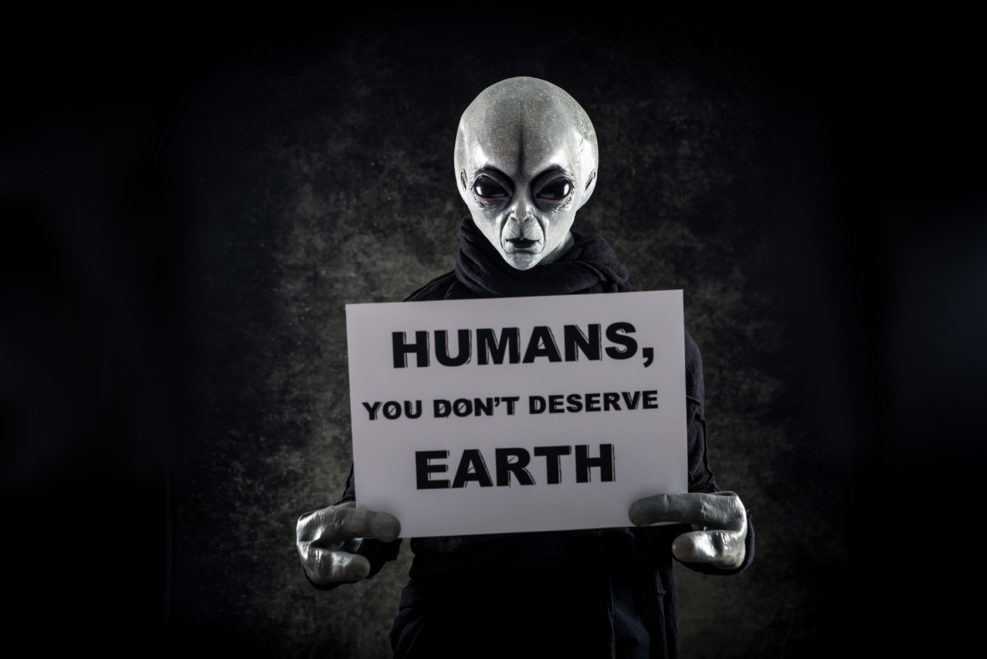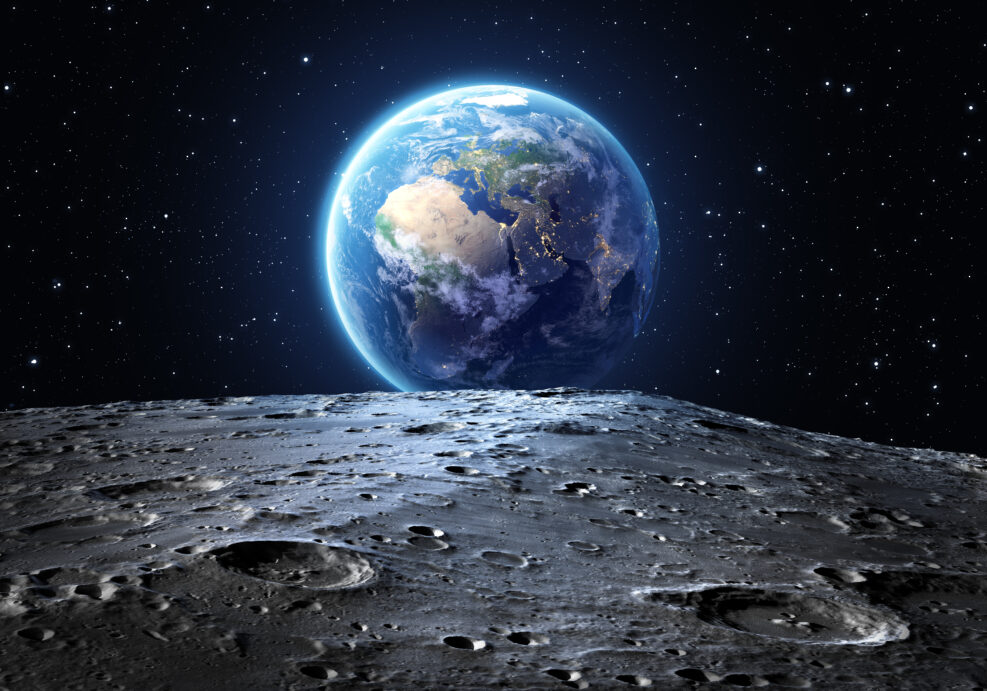
TagMatt Williams

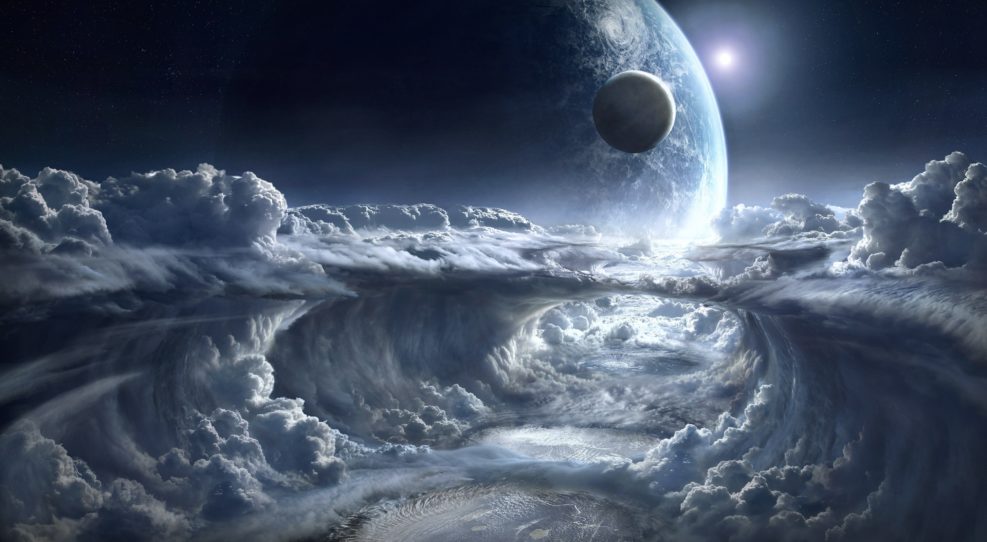
The Search for Extraterrestrial Life 19
One current focus for exoplanet research is on the way life is known to alters its environment in order to remain in existence — the Gaian Habitable ZoneIn our universe: “Billions of celestial objects revealed in gargantuan survey of the Milky Way”: “The new dataset contains a staggering 3.32 billion celestial objects—arguably the largest such catalog so far”: “Most of the stars and dust in the Milky Way are located in its disk—the bright band stretching across this image—in which the spiral arms lie. While this profusion of stars and dust makes for beautiful images, it also makes the Galactic plane challenging to observe. The dark tendrils of dust seen threading through this image absorb starlight and blot out fainter stars entirely, and the light from diffuse nebulae interferes with any attempts to measure the brightness of individual objects. Another challenge arises from the sheer number of Read More ›
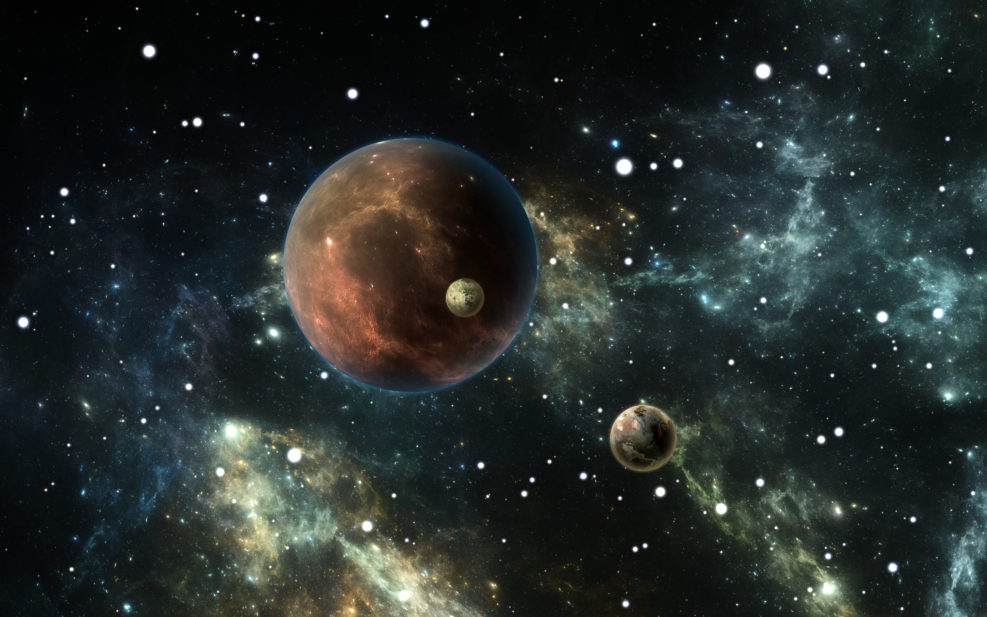
The Search for Extraterrestrial Life 18
We are starting to find more different kinds of exoplanets and an unexpected source of water on MarsIn our universe: Time travel? “How a Rotating Universe Makes Time Travel Possible” At Universe Today, Stony Brook astrophysicist Paul Sutter notes that mathematical philosopher Kurt Gödel (1906–1978) wrote a model for Albert Einstein (1879–1955) of a universe that allows time travel into the past: “Gödel constructed a relatively simple and artificial model universe to prove his point. This universe is rotating and contains only one ingredient. That ingredient is a negative cosmological constant that resists the centrifugal force of the rotation to keep the universe static. / Gödel found that if you follow a particular path in this rotating universe you can end up in your own past. ” (January 11, 2023) Our universe, as it happens, is not Read More ›

A Physicist Rejects the Idea That We Live in a Sim Universe
At IAI News, Marcelo Gleiser worries that the claim that we are simulated beings with no free will reduces our ability to tackle the problems humanity facesDartmouth College physicist Marcelo Gleiser insists that the reality in which we live is not a simulation by advanced aliens or other intelligences — and that the fact that it isn’t is important. As the summary of his essay at IAI News explains, The idea that we are living in a simulation has become commonplace. Elon Musk, for example, thinks it is almost certain we are living in a simulation. But the simulation hypothesis comes up against insurmountable problems, and is, in the end, an excuse for us not to sort out our real moral failings… Marcelo Gleiser, “Reality is not a simulation and why it matters” at IAI News (January 4, 2023) The “simulation” idea may sound pretty far-fetched Read More ›
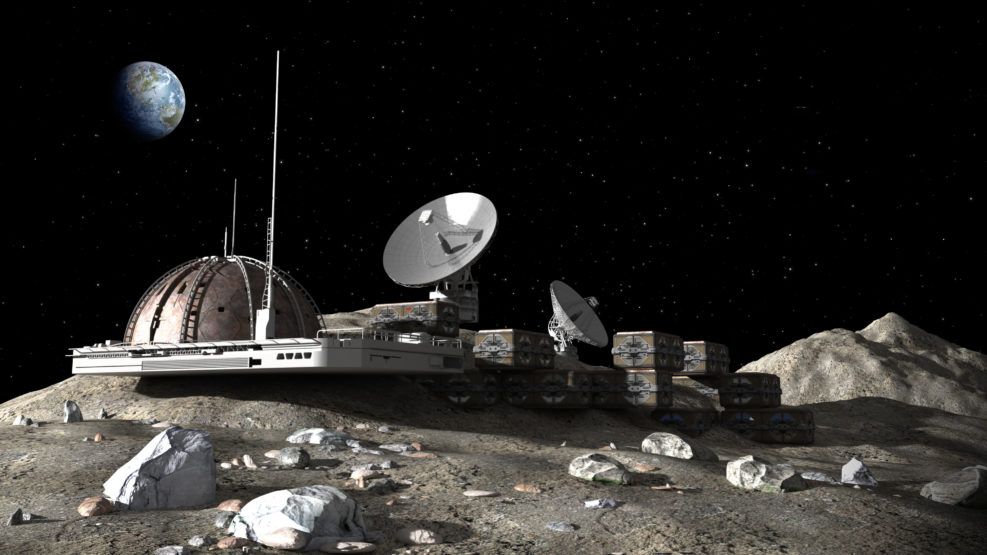
The Search for Extraterrestrial Life 17
Interest in moon exploration and bases is growing and it turns out there is more water there (carried by the solar wind) than thoughtIn our universe: We’re always learning new things now. The universe “has 2−3× more light than expected from the integrated light from galaxies” “According to new measurements by New Horizons, the light coming from stars beyond the Milky Way is two to three times brighter than the light from known populations of galaxies – meaning that there are even more out there than we thought! – Matt Williams, Universe Today, (December 24, 2022) The paper is open access. While we’re here, rogue stars may be even older than we thought: “”We don’t exactly know what made them homeless. Current theories cannot explain our results, but somehow they were produced in large quantities in the early universe,” James Jee, an astronomer Read More ›
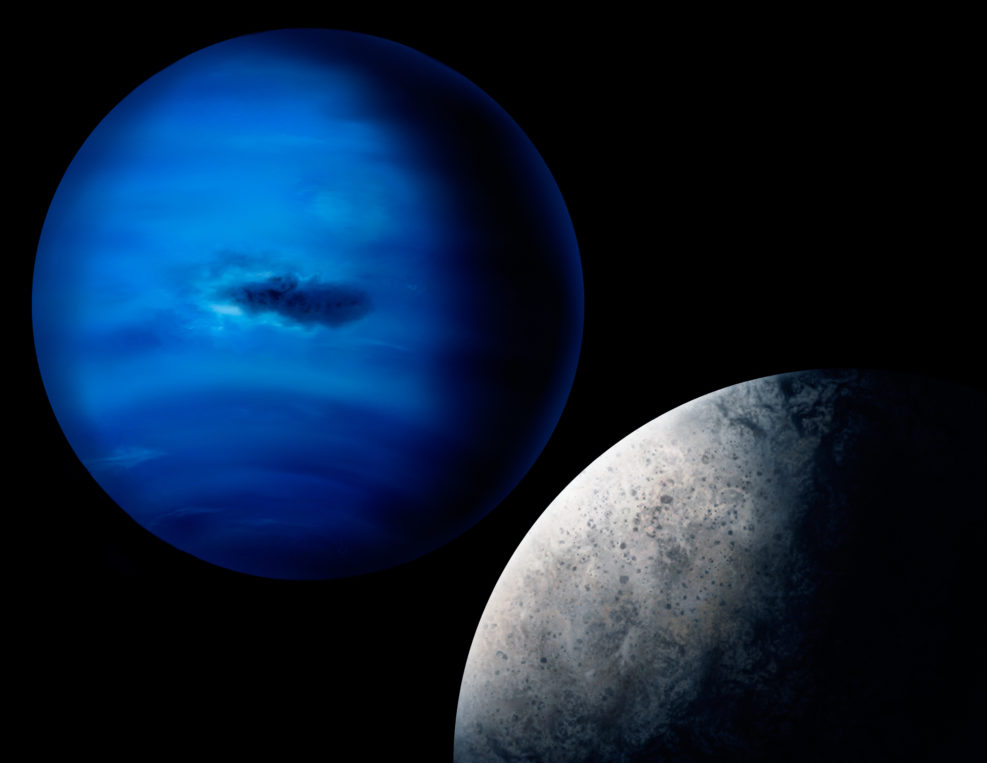
Search for Extraterrestrial Life 13
A surprising candidate in the search for life in our solar system is Neptune’s moon TritonIn our universe: The invisible numbers of the universe: At Scientific American, “Invisible Numbers Are the Most Beautiful Part of Every ‘Space’ Image”: “We are drawn to breathtaking images of the heavens, but there is beauty in the numbers those images hold … Scientists are trained to understand reality through the interface of models. To an astronomer, a graph with a meandering curve that constitutes proof of a gravitational wave rippling through a detector can be as exciting as seeing a movie visualizing the merger of two black holes.” (Fabio Pacucci, November 16, 2022) Asked by Laurence Tognetti at Universe Today: What if we are truly alone? “The astronomer Carl Sagan was famous for his quote in his book and Read More ›
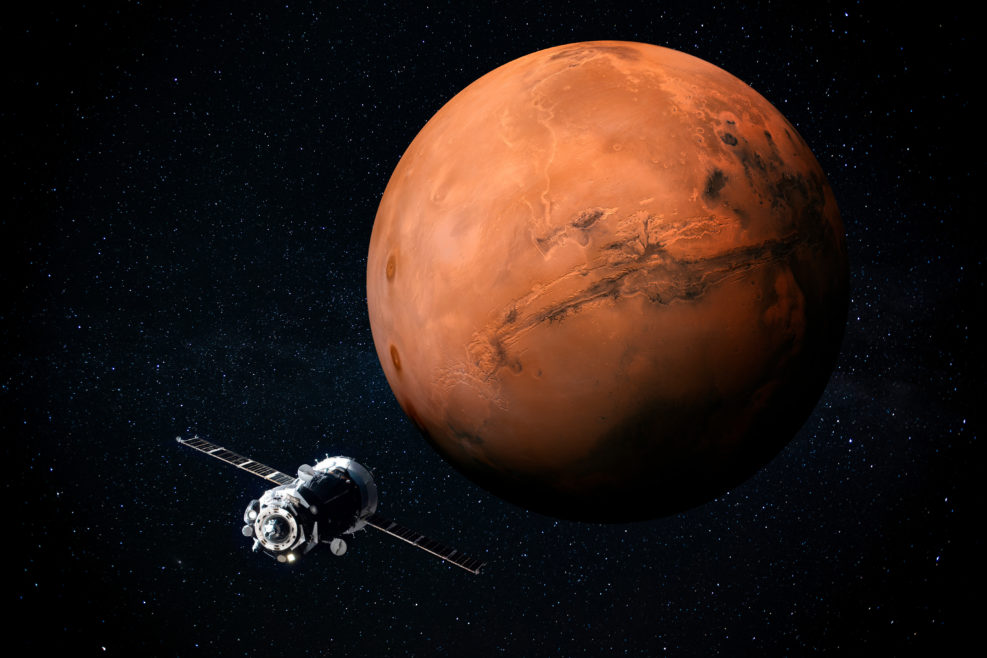
News From the Search for Extraterrestrial Life 5
NASA staff are said to be quite excited about organic materials around the Jezero Crater; astronomers are learning more about "eyeball planets"As the telescopes and other instruments rain data on researchers, each week brings news of interest: From our galaxy: Last week, planets orbiting M-type (common red dwarf) stars came up. Astronomers are classifying these planets in greater detail: “’We have discovered that small planets orbiting this type of star can be classified into three distinct families: rocky planets very similar to Earth, planets with half their mass consisting of water that we call water worlds, and mini-Neptunes with extended atmospheres of hydrogen and/or helium’, describes Pallé.” – Instituto de Astrofísica de Canarias (IAC) (September 8, 2022) One feature of these worlds may be a surprise: “Given that they are tidally locked to their suns, these planets may also have liquid Read More ›
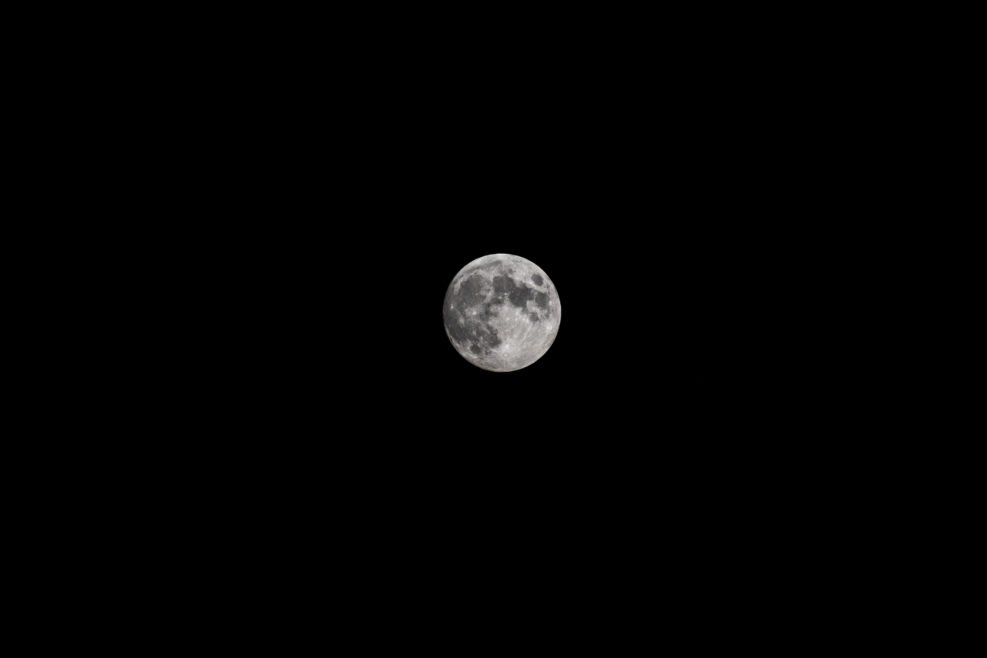
Sixty Billion Stars. And No Aliens? What Now?
Are we approaching a crisis of faith in ET?At Universe Today, Matt Williams asks if it is time to update the Drake Equation, by which you could settle — in your own mind — how likely the aliens are. It began to be developed nearly sixty years ago at a conference at the National Radio Astronomy Observatory in Green Bank, West Virginia. And everyone took for granted that we would be hearing from the aliens soon. That was the basis of Search for Extraterrestrial Intelligence (SETI) — keeping the hope alive. Rather than being an actual means for quantifying the number of intelligent species in our galaxy, the purpose of the equation was meant to frame the discussion on SETI. In addition to encapsulating the challenges facing scientists, Read More ›

What If Extraterrestrials Can’t Afford To Take Chances With Us?
That’s the Dark Forest Hypothesis, riffing off the title of one of famed Chinese sci-fi author Liu Cixin’s novelsIn recent months we’ve been looking at science writer Matt Williams’s coverage of the many reasons (links below) people have advanced as to why we do not see extraterrestrials except at the movies. Last Saturday, we considered the Aurora Hypothesis: Given the difficulties and risks of space travel, extraterrestrials with advanced technology may have visited Earth only one in a million years, researchers say. Another hypothesis that Williams has examined is the Dark Forest Hypothesis. He begins by noting that space exploration necessarily conjures up the notion of risk: “Words like Rim, Edge, Fringe, and Verge, Beyond, Perimeter, and Periphery all conjure up feelings of intrigue and anxiety – no doubt, in different measures for different people”: This particular proposed Read More ›
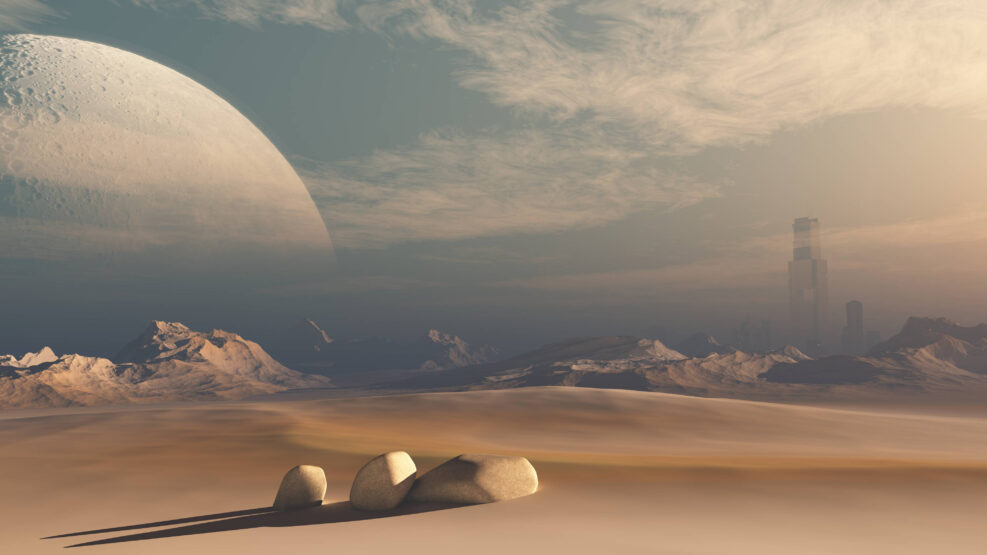
The Aurora Hypothesis: ET Could Risk Only Rare Contact With Us
Given the difficulties and risks of space travel, extraterrestrials with advanced technology may have visited Earth only one in a million years, researchers sayIn recent months we’ve been looking at science writer Matt Williams’s coverage of the many reasons (links below) that have been advanced as to why we do not see extraterrestrials except at the movies. Last Saturday, we considered the Percolation Hypothesis, whose beauty is its common-sense simplicity: The aliens can’t overcome the laws of physics, any more than we can. In the real world, barriers like years between communications even at the speed of light would take a toll on adventurousness. Another hypothesis that Williams has examined is our focus today, the Aurora Hypothesis, “just because planets are habitable doesn’t mean that intelligent life can colonize there.” (Williams) The thesis has had a busy life in science media. Its earliest Read More ›
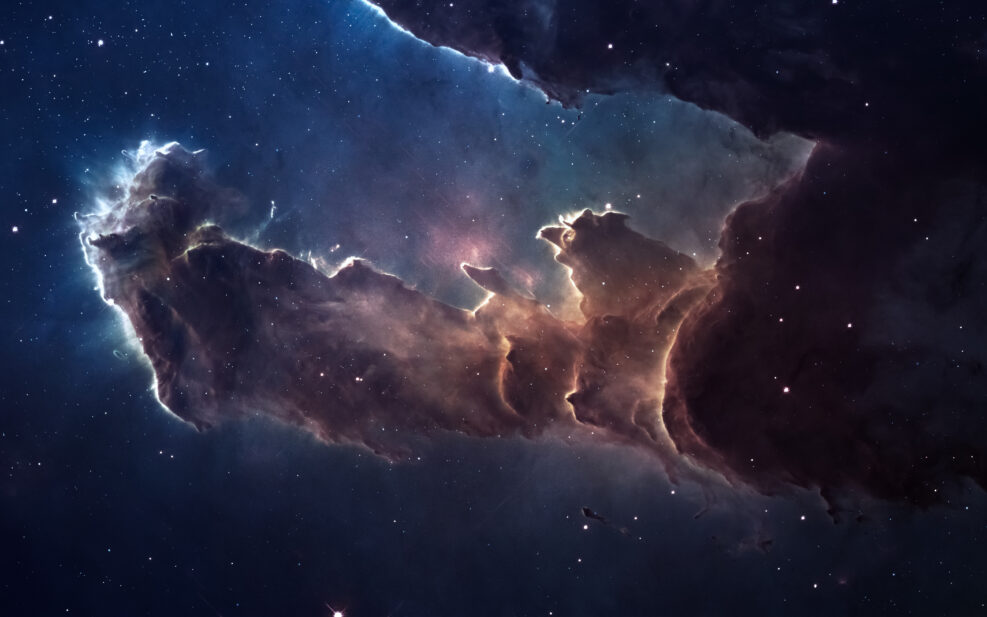
Is Real-World Space Travel Just Too Daunting for ET?
That’s the Percolation Hypothesis as to why we don’t make contact with aliens. They can’t overcome the laws of physics, any more than we canLast week we looked at another reason that has been advanced, as to why we do not see extraterrestrials except at the movies. Science writer Matt Williams has been looking at the reasons (see the links below.) Last Saturday, we looked at the possibility that Earth is unusual in that it is a rocky planet whose intelligent inhabitants live on the surface. Many rocky planets and moons with icy surfaces may have interior oceans that harbor life.: In that case, intelligent life may not think of space exploration. Another hypothesis that Williams has examined is the Percolation Theory Hypothesis, that there are limits imposed by the laws of physics as to what intelligent life forms can do by way of Read More ›

Is Intelligent Life Found in Oceans Inside Planets and Moons?
The Ocean Planets Hypothesis is that intelligent beings may flourish in the interior oceans of the moons of gas giant planets — or within exoplanets — but they are trapped thereReaders will recall that last year, we were looking at science writer Matt Williams’s analysis of the various reasons that we do not see extraterrestrials except at the movies. (See the links below.) Last time out in November, we looked at the Transcension Hypothesis: The extraterrestrial intelligences exist—but after a Singularity, they became virtual intelligences, exploring inner space at an undetectably small scale. Williams has reported since then on some additional hypotheses so this week we look at a more conventional approach — the “Ocean Worlds” Hypothesis, that icy planets may have interior oceans that harbor life: To illustrate, there’s the search for life that is going on right now in the Solar System, which is almost entirely focused on Read More ›
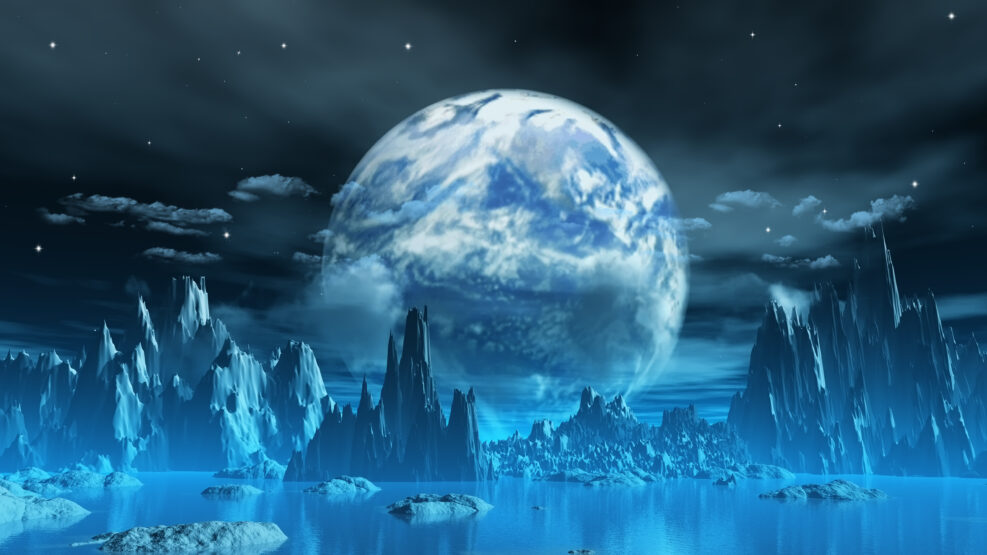
We Won’t Find ET on Ocean Planets, Researchers Say
We will see few extraterrestrials if a great many promising exoplanets are WaterworldsScience writer Matt Williams has been writing a series on the question of why, despite the size of our galaxy, we see no other intelligent life forms. It could be, he suggests, that “many planets out there are just too watery!” Williams points out that, although water covers 71% of Earth’s surface, it is only 0.02% of the planet’s mass. If the proportion were much higher, Earth would be an ocean planet because the water would surface. It’s an open question whether an ocean planet would feature highly technologically developed intelligent life forms. Dolphins, for example, are quite intelligent but they do not seek to use any technology. The question of whether a planet could have too much water arose, Read More ›

The Aliens Exist—But Evolved Into Virtual Reality at a Nanoscale
That’s the Transcension Hypothesis, the latest in our series on science fiction hypotheses as to why we don’t see extraterrestrialsReaders will recall that we have been looking at science writer Matt Williams’s analysis of the various reasons that we do not see extraterrestrials except at the movies. Last week, we looked at the Firstborn Hypothesis: We don’t see aliens because they haven’t evolved yet. And, when they do, we must be careful not to harm their development through colonization. This week is a bit of a deeper dive: The extraterrestrials have evolved so far beyond us that perhaps we could not encounter them. … the Transcension Hypothesis ventures that an advanced civilization will become fundamentally altered by its technology. In short, it theorizes that any ETIs that predate humanity have long-since transformed into something that is not recognizable by Read More ›
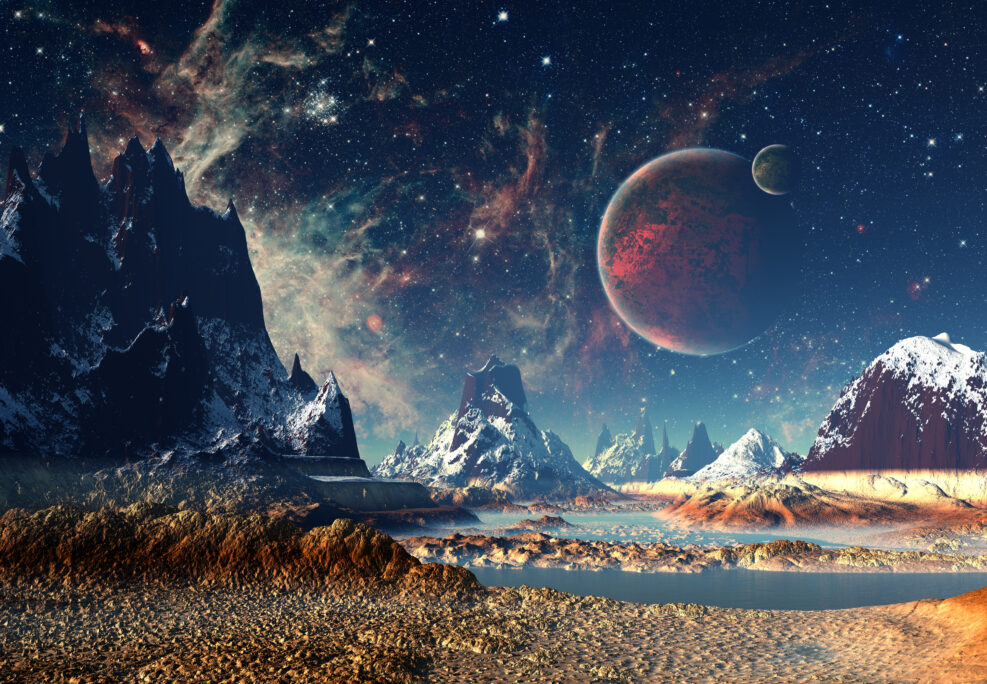
What If We Don’t See Aliens Because They Have Not Evolved Yet?
If so, not only did we emerge during a favorable time in the universe’s history but we could end up suppressing themReaders will recall that we have been looking at science writer Matt Williams’s analysis of the various reasons offered as to why we do not see extraterrestrials except at the movies. Last week, we looked at the Brief Window hypothesis (there is only a comparatively short period of time during which a civilization could make such contact). But there is another, darker possibility: We are ahead of them. And if we are not careful, we could end up suppressing them. That’s the Firstborn hypothesis: The universe has only begun to be hospitable to intelligent life and humans are among the first to benefit from that fact. The current model of the universe shows it radiating from the Big Bang over Read More ›
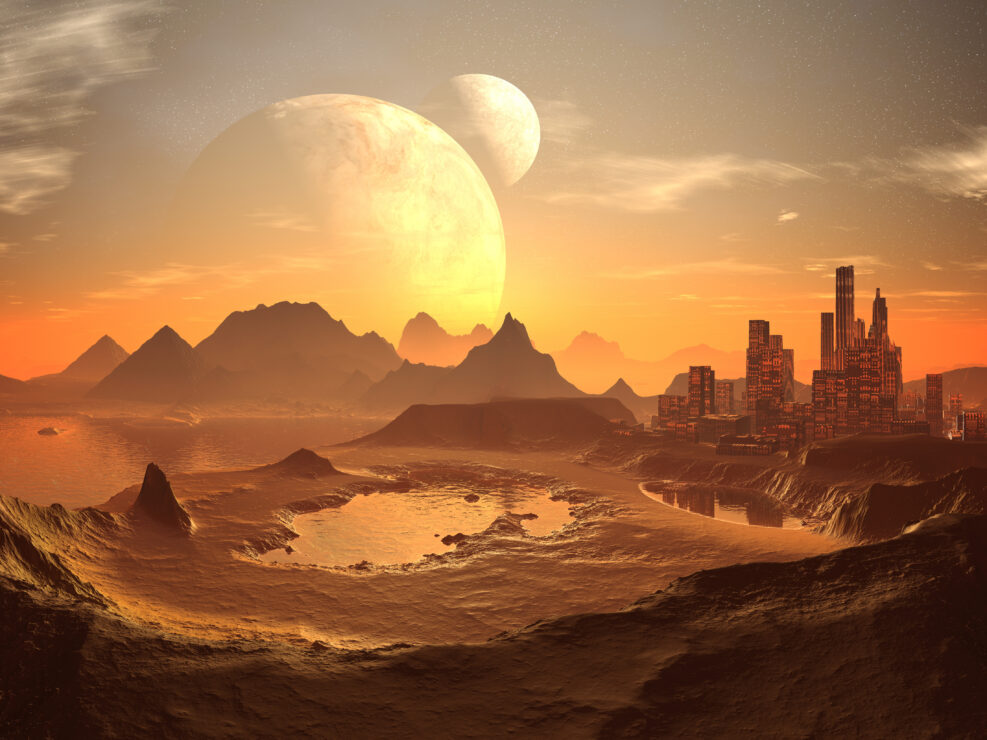
Is the Brief Window for Finding ET Closing?
According to some scenarios, we could be past our best-before date for contacting aliensReaders will recall that we have been looking at science writer Matt Williams‘ analysis of the various reasons that we do not see extraterrestrials except at the movies. We’ve listed (below) the many interesting ideas he has covered but now here’s a new one!: What if there is only a brief window during which a space-faring civilization can even develop? For the sake of the Brief Window Hypothesis, the key parameter is L. In this case, it can be defined as the amount of time a civilization can be expected to exist before succumbing to an extinction-level event. This could take the form of a natural disaster (an asteroid impact) or come in the form of self-destruction (nuclear or biological Read More ›

Does Science Fiction Hint That We Are Actually Doomed?
That’s the implication of an influential theory as to why we never see extraterrestrialsRecently science and science fiction writer Matt Williams has been writing a series at Universe Today on why the extraterrestrial intelligences that many believe must exist in our universe never show up. Last week, we looked at the hypothesis that planets that can host life are rare so there are not many aliens out there to find. This week we look at a more ominous hypothesis. In “Beyond “Fermi’s Paradox” III: What is the Great Filter?” (July 23, 2020), Williams asks us to consider: “there is something in the Universe that prevents life from reaching the point where we would be able to hear from it.” What could that “something” be? The term “the Great Filter” was coined to describe Read More ›
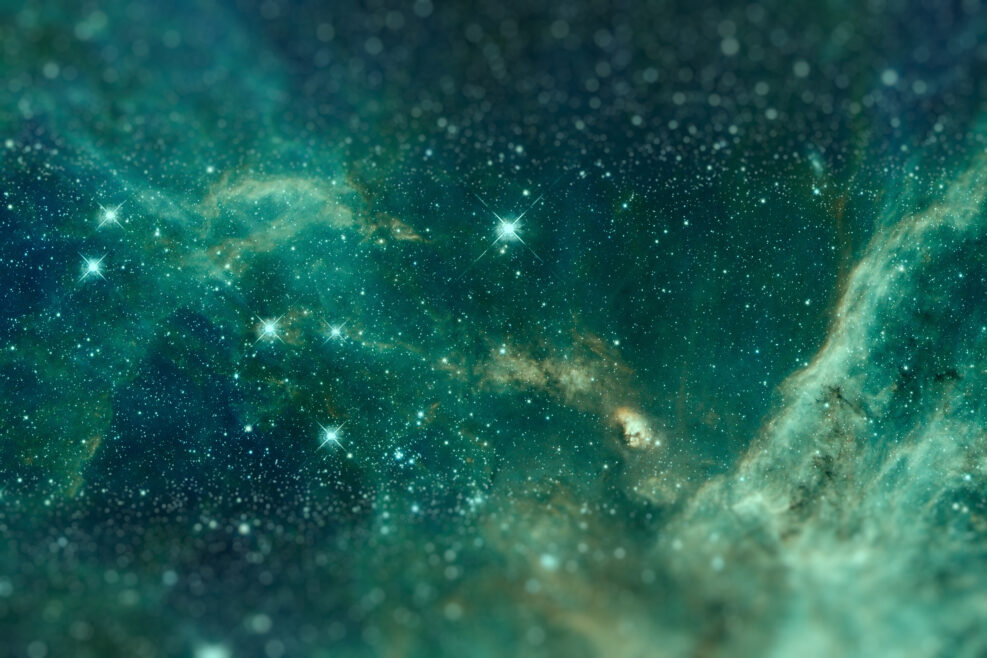
Maybe There Are Just Very Few Aliens Out There…
The Rare Earth hypothesis offers science-based reasons that life in the universe is rareRecently, science and science fiction writer Matt Williams has been writing a series at Universe Today on why extraterrestrial intelligences never make contact with us. Last week, we looked at the hypothesis that, to avoid the heat destruction of their advanced technology, the aliens have put themselves into a digital slumber until the universe cools down. This week, let’s look at a quite different approach, which Williams outlines in “Beyond “Fermi’s Paradox” IV: What is the Rare Earth Hypothesis?” (July 29, 2020): That is “the possibility that life-bearing planets like Earth are just very rare.” We don’t see aliens because they are very uncommon: This is what is popularly known as the “Rare Earth Hypothesis,” which argues that the emergence Read More ›

Researchers: The aliens exist but they are sleeping…
And we wake them at our perilRecently, science (and science fiction) writer Matt Williams has been writing a series at Universe Today on why the extraterrestrial intelligences that many believe must exist in our universe never show up. Last week, we looked at the hypothesis that the aliens’ advanced technology ended up destroying them all and… the machines may be coming for us because destroying is all they know how to do. This week, let’s look at a quite different idea that Williams outlines in “Beyond “Fermi’s Paradox” V: What is the Aestivation Hypothesis?” (August 7, 2020). Aestivation is the summer version of hibernation in winter. The aliens, in this scenario are not dead; they are merely sleeping. Just as many life forms on Earth go Read More ›
